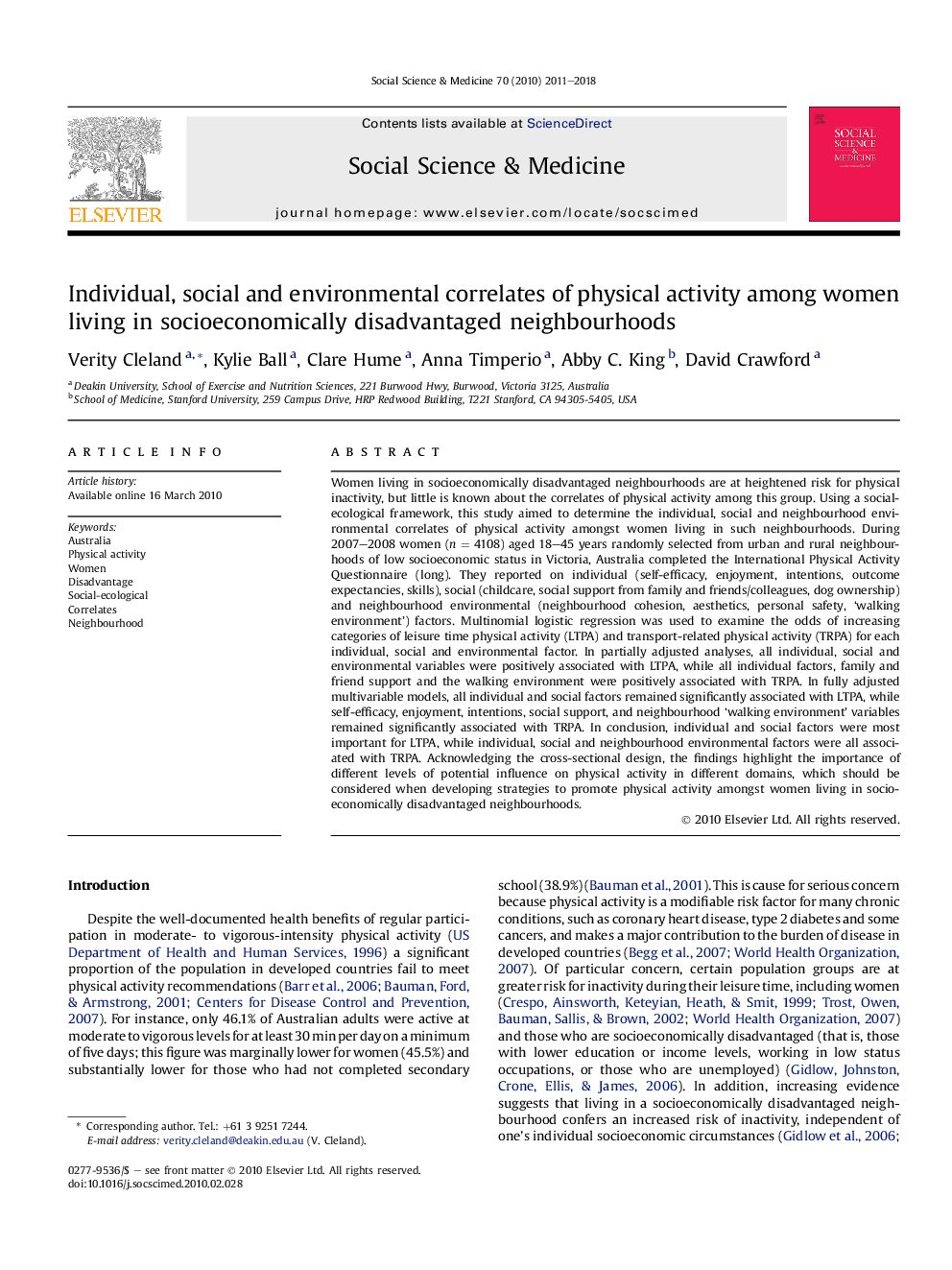| کد مقاله | کد نشریه | سال انتشار | مقاله انگلیسی | نسخه تمام متن |
|---|---|---|---|---|
| 7338395 | 1476093 | 2018 | 8 صفحه PDF | دانلود رایگان |
عنوان انگلیسی مقاله ISI
Individual, social and environmental correlates of physical activity among women living in socioeconomically disadvantaged neighbourhoods
ترجمه فارسی عنوان
همبستگی فردی، اجتماعی و محیطی فعالیت بدنی در میان زنان ساکن در محله های محروم اجتماعی و اقتصادی
دانلود مقاله + سفارش ترجمه
دانلود مقاله ISI انگلیسی
رایگان برای ایرانیان
کلمات کلیدی
موضوعات مرتبط
علوم پزشکی و سلامت
پزشکی و دندانپزشکی
سیاست های بهداشت و سلامت عمومی
چکیده انگلیسی
Women living in socioeconomically disadvantaged neighbourhoods are at heightened risk for physical inactivity, but little is known about the correlates of physical activity among this group. Using a social-ecological framework, this study aimed to determine the individual, social and neighbourhood environmental correlates of physical activity amongst women living in such neighbourhoods. During 2007-2008 women (n = 4108) aged 18-45 years randomly selected from urban and rural neighbourhoods of low socioeconomic status in Victoria, Australia completed the International Physical Activity Questionnaire (long). They reported on individual (self-efficacy, enjoyment, intentions, outcome expectancies, skills), social (childcare, social support from family and friends/colleagues, dog ownership) and neighbourhood environmental (neighbourhood cohesion, aesthetics, personal safety, 'walking environment') factors. Multinomial logistic regression was used to examine the odds of increasing categories of leisure time physical activity (LTPA) and transport-related physical activity (TRPA) for each individual, social and environmental factor. In partially adjusted analyses, all individual, social and environmental variables were positively associated with LTPA, while all individual factors, family and friend support and the walking environment were positively associated with TRPA. In fully adjusted multivariable models, all individual and social factors remained significantly associated with LTPA, while self-efficacy, enjoyment, intentions, social support, and neighbourhood 'walking environment' variables remained significantly associated with TRPA. In conclusion, individual and social factors were most important for LTPA, while individual, social and neighbourhood environmental factors were all associated with TRPA. Acknowledging the cross-sectional design, the findings highlight the importance of different levels of potential influence on physical activity in different domains, which should be considered when developing strategies to promote physical activity amongst women living in socioeconomically disadvantaged neighbourhoods.
ناشر
Database: Elsevier - ScienceDirect (ساینس دایرکت)
Journal: Social Science & Medicine - Volume 70, Issue 12, June 2010, Pages 2011-2018
Journal: Social Science & Medicine - Volume 70, Issue 12, June 2010, Pages 2011-2018
نویسندگان
Verity Cleland, Kylie Ball, Clare Hume, Anna Timperio, Abby C. King, David Crawford,
